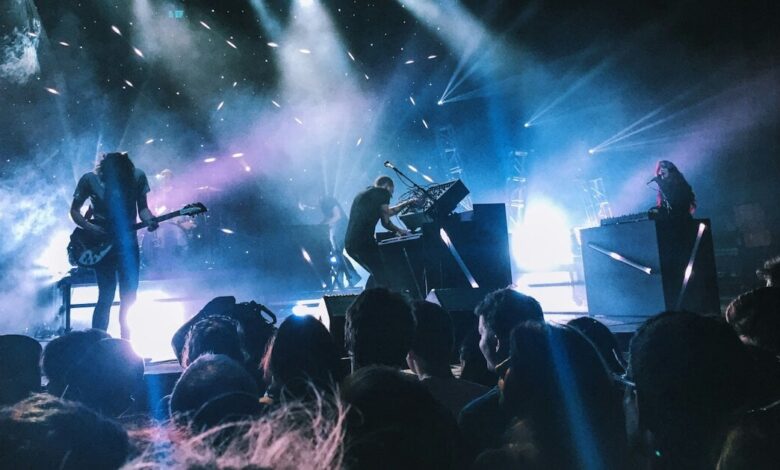‘Middle class’ of artists growing larger, Luminate report finds, as 29,253 clocked between 1m and 10m on-demand audio streams in H1

The general perception is that, in the music world, there are the “superstar” artists and the “starving artists” – those who rake in streams by the billions and sell out arenas, and those with low stream counts who are lucky to get a club gig.
But the reality is that there is also a growing “middle class” of artists – those who count their streams in the millions, and occupy the space between obscurity and superstardom.
According to market monitor Luminate’s latest Midyear Music Report, – which gathers data from some 500 sources, including the major streaming platforms, in 48 markets worldwide – the number of artists in this middle tier is growing noticeably.
In H1 2024, there were 29,253 artists who clocked between 1 million and 10 million on-demand audio streams, an increase of 5.1% from the same period a year earlier.
You can download the report here.

Among those who clocked 10 million–50 million on-demand audio streams, the number of artists grew by 5.4%, to 5,222 artists.
Luminate’s report offered examples of who these middle-tier artists are: 98 Degrees and Sofia Carson in the pop genre; Jack Harris and Seven Mary Three in the rock genre; Skylar Blatt and Lil Eazzyy in R&B/hip-hop; Hernan Trejo and Julio Iglesias in Latin music; and Will Dempsey and Hunter Hayes in country.

With such pronounced growth in this category, it’s little wonder that some major music companies are looking for ways to increase their exposure to the middle class of artists. Perhaps most notable among them is Warner Music Group, whose CEO, Robert Kyncl, has indicated he’s looking to grow WMG’s presence among this tier of artists.
Earlier this year, MBW speculated that the distributors that are best positioned in this middle tier of musicians could soon be the target of acquisitions. In fact, WMG’s interest in France-headquartered Believe (owner of indie distributor TuneCore) likely had something to do with this interest in the middle tier of artists.
And it certainly does seem to be the case that indie distributors are where you’ll find this middle tier. Luminate’s data shows these artists are much more likely to be independent than those higher up the ladder.
Among those in the 1 million–10 million streams range, 62.1% had indie distribution, while in the 10 million–50 million streams range, 37.4% had indie distribution.
That compares to just 9.9% with indie distribution among artists with 500 million+ streams during the first half of 2024.
And of the 46 artists who clocked more than 1 billion US streams in H1 2024, 43 of them had major distribution, Luminate reported.
Interestingly, the share of artists with indie distribution is increasing across the entire range. One year earlier, the share of 500 million+ streams artists with indie distribution was just 7.1%.

Premium streams rising vs. ad-supported
The Luminate report also found that the number of streams coming from paid subscriptions is rising relative to streams from ad-supported accounts.
The report didn’t specify whether this was due to more listeners signing up for paid subscriptions, or whether those with paid subscriptions were listening to more music (or both).
But in Luminate’s statistics, this is reflected by the fact that the stream count needed to equal an album sale has been dropping.
Luminate calculates the “album equivalent” ratio as 1,250 paid-subscription audio/video streams equalling an album sale, or 3,750 ad-supported audio/video streams equalling an album sale.
With more streams coming from paid subscriptions, the blended (paid and ad-supported) ratio has fallen to 1,390 streams. As recently as H1 2021, the blended ratio was near 1,440 streams.

Luminate noted that this ratio varies from genre to genre.
“Country music has the lowest average number of blended streams per album equivalent, while Latin has the highest when compared to other core genres,” Luminate said.
What this means is that country music gets the highest share of listens from paid subscriptions, while Latin music gets the lowest share of streams from paid subscriptions.
Notably, we can’t assume this means that country music listeners are the most likely to pay for a music subscription, while Latin music listeners are the least likely. That’s because Luminate is counting streams, not listeners. It may simply be the case that country music listeners who pay for a subscription listen to more music than Latin music listeners with a paid subscription.
K-pop fans love new music
Luminate’s report also gave us some insight as to which genre gets its fans most excited about new release, and the answer is – perhaps not surprisingly – K-pop.
More than 70% of the K-pop audience reported streaming music within a week of its release. At the other end of the spectrum is country music, where fewer than 50% of listeners reported streaming music within a week of release.
The report also had some interesting data for music streaming services worried about churn. In terms of keeping subscribers put, Luminate’s data suggests streamers should look to live streaming of events, which is prioritized 50% more often among listeners thinking of switching music streaming services, than among music listeners overall.
Also useful for retaining subscribers: Additional content outside of music (prioritized 49% more often) and exclusive artist content (prioritized 48% more often).Music Business Worldwide
Source link


